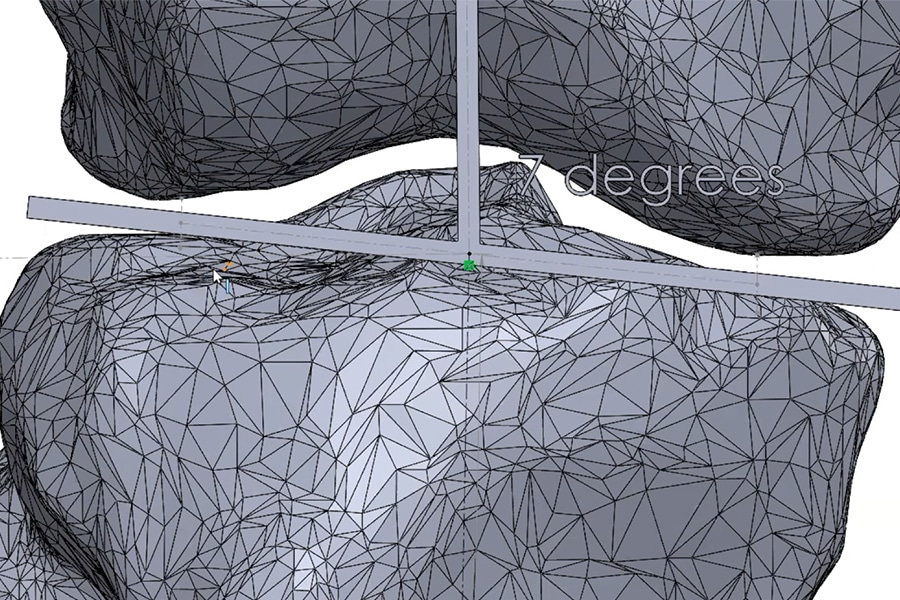The standard knee replacement is seemingly on its way out due to the emergence of newer technologies and more personalized approaches. Kinomatic believes that the future of total joint arthroplasty is in personalized approaches. Given that long term implant survivorship is around 10-20 years, unfortunately there isn’t much data yet to clinically determine that these personalized approaches provide the same lifespan as mechanically aligned knee replacements, which have been in practice a lot longer. What we have been able to gather so far is that on average, patients with custom aligned knees experience improved function and comfort compared to patients with mechanically aligned knee replacements. There are several different recorded surgical approaches to personalized knee replacements, but all have the common goal of attempting to accurately restore native knee kinematics and improve functional outcomes. A new study published in March of 2021 breaks down these different personalized approaches and how patients felt after receiving these procedures.
The first approach is called “Kinematic Alignment”. With a kinematic approach, the surgeon begins by resecting the femur first, maintaining the kinematic axis through the femoral head. The tibia is then resected and balanced to line up with the kinematic axis. After collecting data comparing mechanical vs kinematic TKA in patients at a 2 year follow up exam, there were 4 of 5 studies who reported no difference between the two, however, in one study the findings showed significant improvement in the kinematic alignment group in all scores, measuring range of motion, function, and pain. When assessing satisfaction in patients who had previously received a mechanically aligned knee and subsequently received a kinematic aligned knee, they found that 83% of the patients were satisfied with the mechanically aligned knee at the time they were treated with their kinematically aligned knee and 92% of them were satisfied with their kinematically aligned knee at their last follow up.
The “Inverse Kinematic Alignment” is essentially the same principle and technique as in the kinematic approach, just in reverse. The author notes that this method can introduce some difficulties if a tibial recut is required for balancing. A deeper tibial cut can cause several complications such as risk for early loosening, could jeopardize the MCL, and could also make revisions increasingly difficult if needed. Nevertheless, the one report we currently have noted that after 12 months, there was no difference in clinical results, but there was a higher rate of satisfaction and significant improvement in postoperative Oxford Knee Score.
The “Restricted Kinematic Alignment” is similar to kinematic, however, doesn’t allow for the possibility of such extreme resection angles. All of the cuts made must be within a set deviation from the mechanical axis counterpart. This is more of a hybrid approach between kinematic and mechanical alignment. Again, in this study they found encouraging results finding that the restricted kinematic group had less intercompartmental pressure, and were 45% more likely to obtain optimal knee balance.
The last type of personalized knee replacement method is “Functional Alignment”. This is seen as an evolution of the kinematic alignment method by using even more patient specific implants and cutting guides. Surgeons performing functional alignment total knee arthroplasty often use advanced computer software and, in some cases, robotic- assisted systems. The results found that there was about a 93% accuracy rate where the surgical measurements were less than or equal to 3 degrees between preoperative and postoperative CT scans, and overall, resulted in well-balanced knees.
In summary, when each of these personalized total knee replacement procedures is compared to the standard mechanical alignment technique, the data we have so far favors the personalized approaches. Patients generally have better range of motion, function, and postoperative discomfort. Patients receiving personalized TKA also reported less pain during recovery compared to mechanically aligned TKA. The fact that these personalized approaches are still relatively new in the joint replacement field means that we still don’t really know how successful these approaches are when assessing long-term function. There needs to be further follow up with these patients to determine clinical outcomes and implant survivorship.
Orthopedic medicine has advanced greatly in recent years and everything we currently know about personalized medicine, especially when it comes to total joint arthroplasty, suggests that personalized approaches are the way of the future. The team at Kinomatic has extensive experience in personalized total joint templating, and knows first-hand the benefits these procedures have over standard mechanical TKA. Kinomatic is working every day to let people know that there are better alternatives to the traditional joint replacement. If you are looking for more information, visit our website at the link below:
For more detailed information on the topics discussed in this post please read the original article at the link below:
https://www.ncbi.nlm.nih.gov/pmc/articles/PMC8019550/
Lustig S, Sappey-Marinier E, Fary C, Servien E, Parratte S, Batailler C. Personalized alignment in total knee arthroplasty: current concepts. SICOT J. 2021;7:19. doi:10.1051/sicotj/2021021
